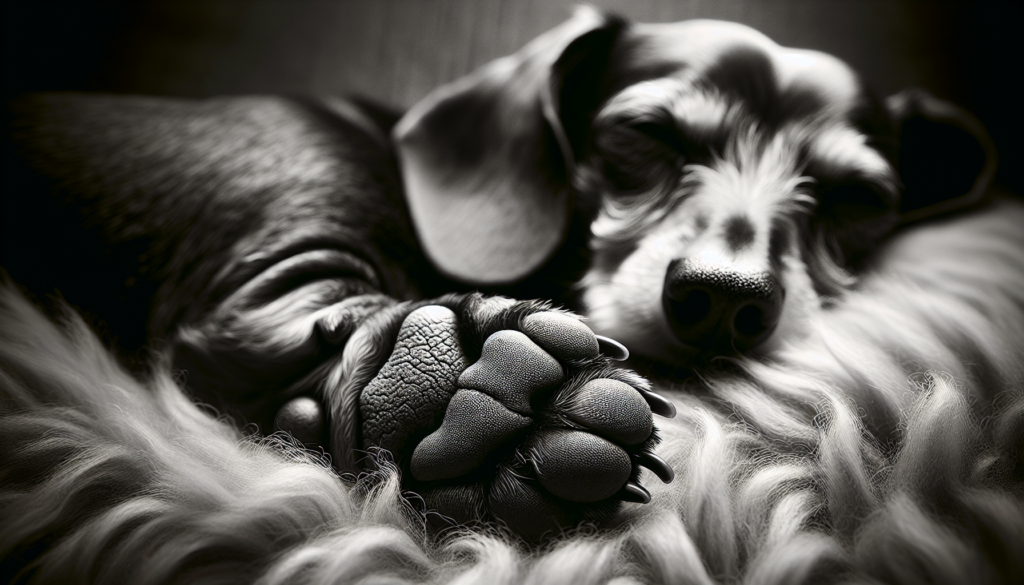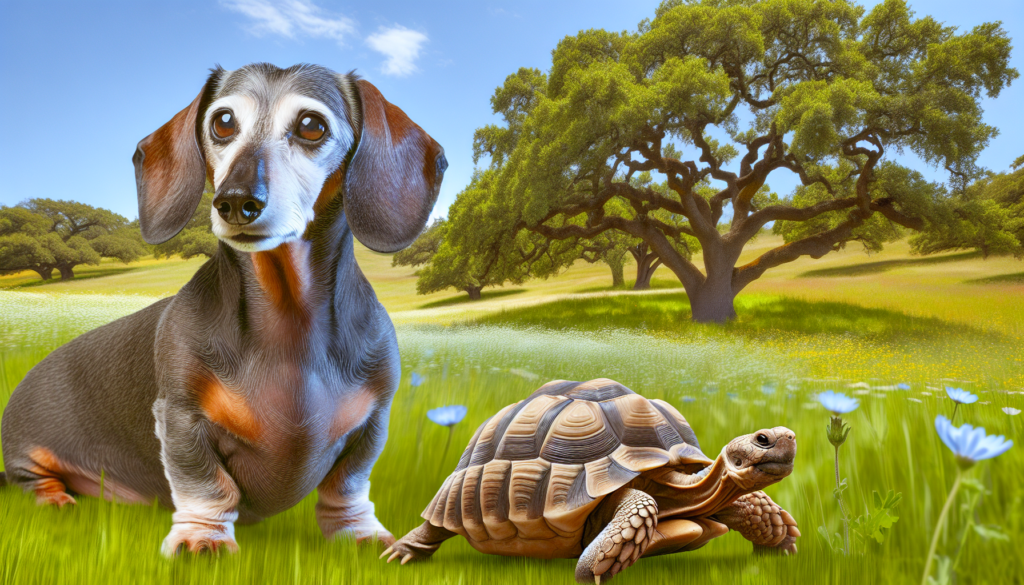Imagine meeting a remarkable little dog named Max, who has captured the hearts of dog lovers all around the world. Max happens to be the oldest dachshund on record, and his incredible story is one for the ages. From his love for chasing balls to his infectious wagging tail, Max defies his age with a zest for life that is utterly inspiring. In this article, we’ll explore the fascinating journey of Max, the dachshund who has beaten all odds and continues to shine as a true testament of resilience and canine companionship. So sit back, relax, and get ready to embark on an unforgettable journey through the whimsical tale of the oldest dachshund on record.
History of Dachshunds
Origins of the Dachshund
The Dachshund, also known as the “sausage dog” or “wiener dog,” is a breed that originated in Germany. Its name is derived from the German words “Dachs,” which means badger, and “Hund,” which means dog. Dachshunds were initially developed in the 15th century to hunt badgers, hence their distinctive elongated bodies and short legs, which allowed them to dig into burrows and flush out their prey. They were also used for hunting other animals like rabbits and foxes. The breed’s unique physical features were carefully selected through selective breeding to enhance their hunting abilities.
Popularity and Purpose
Dachshunds quickly gained popularity in Germany due to their exceptional hunting skills and charming appearance. They became a favorite among the European nobility and were frequently seen in the courts of German rulers. The breed’s popularity continued to spread across Europe and eventually reached the United States in the late 19th century. In the US, Dachshunds initially faced some resistance due to their association with Germany during World War I, but they eventually gained a devoted following.
Dachshunds’ hunting instincts and remarkable scent tracking abilities were highly valued, and they were often used for tracking wounded animals, participating in field trials, and competing in various dog sports. Over time, their purpose shifted from hunting to becoming beloved family companions and show dogs. Today, Dachshunds are still recognized for their keen sense of smell and are occasionally used for hunting small game in some regions. However, their primary role is that of a loyal and affectionate companion.
Characteristics of Dachshunds
Dachshunds possess a unique set of physical and temperamental characteristics that distinguish them from other breeds. Their elongated bodies, deep chests, and short legs give them a distinctive appearance that captures attention wherever they go. They are available in different coat varieties, including smooth, wirehaired, and longhaired, each with its own set of specific grooming needs. Their coat colors can range from solid black, tan, or chocolate, to dappled or brindled patterns.
Apart from their physical appearance, Dachshunds are known for their friendly and outgoing nature. They are typically highly intelligent, courageous, and independent dogs. Despite their small size, Dachshunds often display a bold and fearless attitude. They are incredibly loyal to their loved ones and can be both playful and mischievous. Dachshunds also have a reputation for being a bit stubborn, which can make training a challenge at times. However, with consistent and positive reinforcement, they can excel in obedience and agility activities.
Life Expectancy of Dachshunds
Factors Influencing Life Expectancy
Like any other living beings, the life expectancy of Dachshunds can be influenced by various factors. Genetics play a significant role, as inherited conditions can impact their overall health and longevity. Additionally, diet, exercise levels, veterinary care, and the care they receive at home can greatly affect their lifespan. Providing a nurturing environment, proper nutrition, regular exercise, and routine medical check-ups are all crucial in maximizing a Dachshund’s lifespan.
Average Age of Dachshunds
On average, Dachshunds have a lifespan of around 12 to 16 years. However, it is essential to note that individual dogs may vary. Some Dachshunds may live beyond the typical range, while others may experience health issues that may shorten their lifespan. It is crucial for Dachshund owners to be aware of their dog’s specific needs and take the necessary steps to ensure their well-being and longevity.

Notable Dachshund Longevity Cases
Record-Holding Dachshunds
Over the years, there have been several notable cases of Dachshunds living exceptionally long lives. One such case is that of a Dachshund named Chanel, who gained recognition as the oldest Dachshund on record. Born on May 6, 1988, Chanel lived until August 28, 2009, reaching the remarkable age of 21 years and 114 days. Her longevity captured the attention of dog lovers worldwide and served as an inspiration to many Dachshund owners.
Dachshund Longevity Research
The remarkable longevity of Dachshunds like Chanel has prompted researchers to delve deeper into the factors contributing to their extended lifespans. Various studies have focused on analyzing the genetic makeup of Dachshunds and identifying potential genetic markers associated with longevity. By understanding the genetic aspects of Dachshunds’ longevity, researchers hope to develop strategies to promote healthier aging in not only Dachshunds but also other breeds.
Meet The Oldest Dachshund
Background and Owner
The oldest Dachshund currently alive is Rosie, a delightful nine-year-old longhaired Dachshund living with her loving owner, Sarah. Rosie was born on July 15, 2012, and has captured the hearts of many with her vibrant spirit and zest for life.
Health and Care Secrets
Rosie’s impressive longevity can be attributed to the exceptional care provided by her owner, Sarah. Sarah ensures that Rosie follows a balanced diet, consisting of high-quality dog food specifically designed for small breeds. Regular exercise is an essential part of their routine, achieved through daily walks and supervised play sessions. Rosie also receives routine veterinary check-ups to address any potential health concerns before they become significant issues.
Celebrating a Long Life
In honor of Rosie’s long life, Sarah loves to organize birthday parties for her. These celebrations bring together friends and family, both human and canine, who gather to celebrate Rosie’s milestone and appreciate the joy she has brought into their lives. The festivities include delicious treats, games, and plenty of cuddles and belly rubs for the star of the day – Rosie.

15 Tips for Enhancing Dachshund Longevity
Nutrition and Diet
- Feed a well-balanced diet appropriate for the Dachshund’s age and specific needs.
- Avoid overfeeding and monitor portion sizes to prevent obesity, which can lead to various health issues.
Exercise and Weight Management
- Regular exercise is crucial to maintain a healthy weight and overall well-being.
- Engage in activities that are suitable for Dachshund’s physical characteristics, considering their low stature and potential back problems.
Regular Veterinary Care
- Schedule routine check-ups with a trusted veterinarian to detect and address any health concerns promptly.
- Keep up with vaccinations, parasite prevention, and dental care to maintain optimal health.
Common Health Issues in Dachshunds
Back Problems
Dachshunds have a unique skeletal structure that puts them at a higher risk of developing back problems, including intervertebral disc disease (IVDD). Owners must take precautions to prevent injuries and provide support for their Dachshund’s back, such as using ramps instead of stairs and avoiding activities that put excessive strain on their spine.
Obesity and Related Complications
Dachshunds have a tendency to gain weight, which can lead to obesity-related complications such as diabetes, heart disease, and joint problems. Maintaining a healthy weight through proper diet and regular exercise is crucial to prevent these issues and promote longevity.
Eye and Ear Conditions
Dachshunds are susceptible to various eye and ear conditions, including progressive retinal atrophy, cataracts, and ear infections. Regular check-ups with a veterinarian and proper grooming can help identify and manage these conditions before they become more severe.

Dachshund-Specific Aging Challenges
Mobility Issues and Joint Health
As Dachshunds age, they may experience mobility issues due to their long spine and short legs. Maintaining a healthy weight, providing joint supplements, and engaging in low-impact exercises can help preserve their mobility and overall joint health.
Dental Care in Senior Dachshunds
Senior Dachshunds are prone to dental problems such as gum disease and tooth decay. Regular teeth cleanings, dental chews, and proper oral hygiene can help prevent these issues and ensure a healthy mouth for your aging Dachshund.
Cognitive Changes
Like humans, Dachshunds may experience cognitive changes as they age, such as reduced cognitive function and memory loss. Mental stimulation, interactive toys, and positive reinforcement training can help keep their minds sharp and delay the onset of cognitive decline.
The Role of Genetics
Inherited Conditions
Dachshunds, like many other dog breeds, are prone to certain inherited conditions that can impact their health and longevity. These conditions include IVDD, hip dysplasia, and various eye disorders. Responsible breeding practices and genetic testing can help reduce the incidence of these conditions and promote healthier generations of Dachshunds.
Genetic Testing and Breeding Guidelines
Breeders can utilize genetic testing to identify potential genetic markers associated with inherited conditions and make informed breeding decisions. Following breeding guidelines and prioritizing the well-being of the breed can contribute to the overall longevity and health of Dachshunds.
Health Implications for Longevity
By identifying and addressing potential genetic predispositions and inherited conditions, breeders and owners can significantly impact the health and longevity of Dachshunds. Ensuring that breeding dogs are free from genetic conditions and regularly screening for health issues can prevent the transmission of these conditions to future generations.

Longevity Expectations in Dachshunds Today
Improvements in Healthcare and Nutrition
Advancements in veterinary care and nutrition have played a significant role in extending the lifespan of Dachshunds and other dog breeds. The availability of specialized diets, access to advanced medical treatments, and increased awareness of preventative care have all contributed to the improvement of overall canine health and longevity.
Changing Demographics of Dachshunds
As the popularity of Dachshunds continues to grow, it is important to consider the demographic shifts within the breed. The number of responsibly bred Dachshunds with a focus on health and longevity is increasing, which can positively impact the overall lifespan of the breed. Additionally, educated owners who prioritize the well-being of their Dachshunds contribute to a healthier and longer-living population.
Longest Living Dogs of All Breeds
Comparing Dachshunds to Other Breeds
While Dachshunds can live impressive lives, they are not the longest-living breed. Other breeds such as Chihuahuas, Toy Poodles, and Yorkshire Terriers have been known to live well into their late teens or even early twenties. However, every individual dog is unique, and factors such as genetics, environment, and care play a significant role in determining a dog’s lifespan.
Factors Contributing to Longer Lives
Various factors contribute to longer lives in dogs across different breeds. These factors include responsible breeding practices, early detection and treatment of health conditions, balanced nutrition, regular exercise, and providing a loving and nurturing environment. By prioritizing these aspects, dog owners can help maximize their canine companions’ lifespan, regardless of the breed.
In conclusion, Dachshunds have a rich history as skilled hunting dogs. Over time, their purpose has shifted to becoming beloved family companions. Understanding the factors that influence Dachshunds’ life expectancy is crucial in providing them with the best possible care. By nurturing their health, addressing breed-specific challenges, and prioritizing genetic health, Dachshund owners can maximize their furry friend’s lifespan and enjoy many loving and joyful years together.
